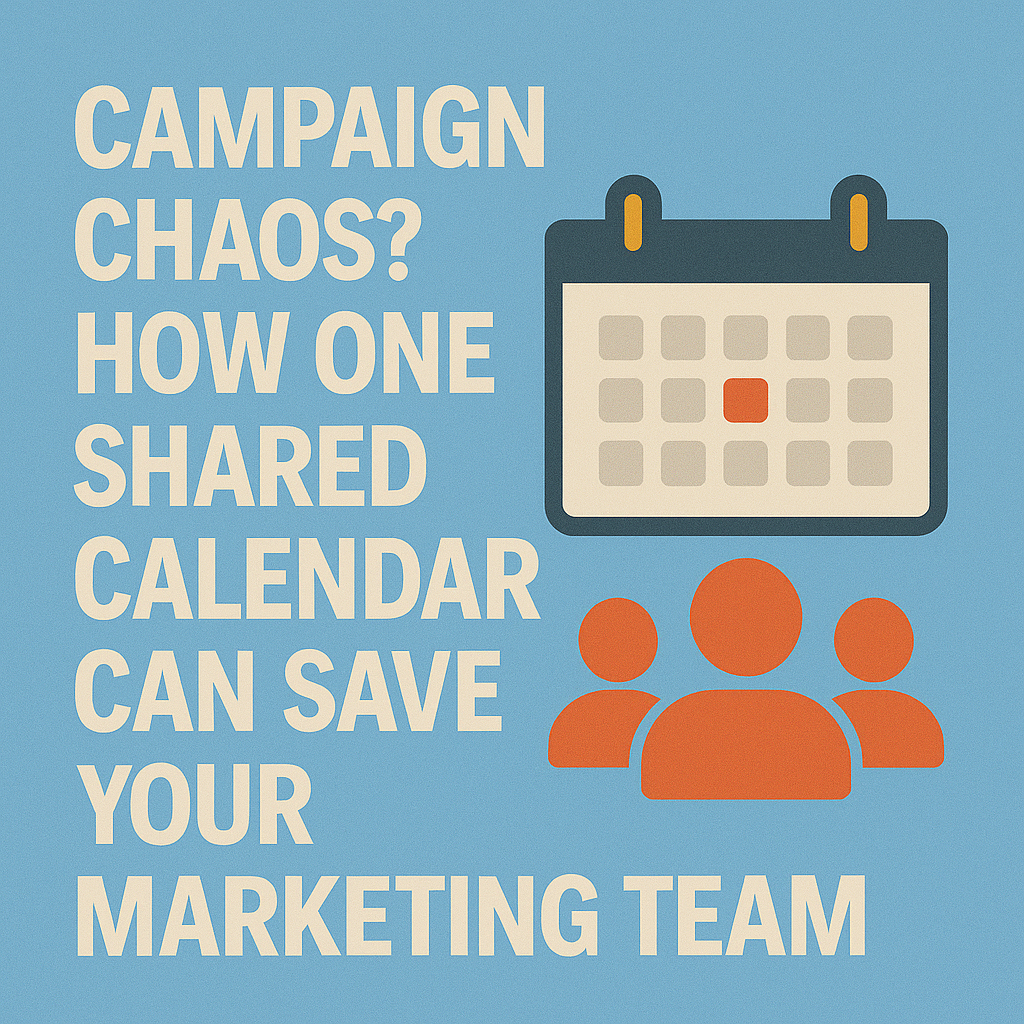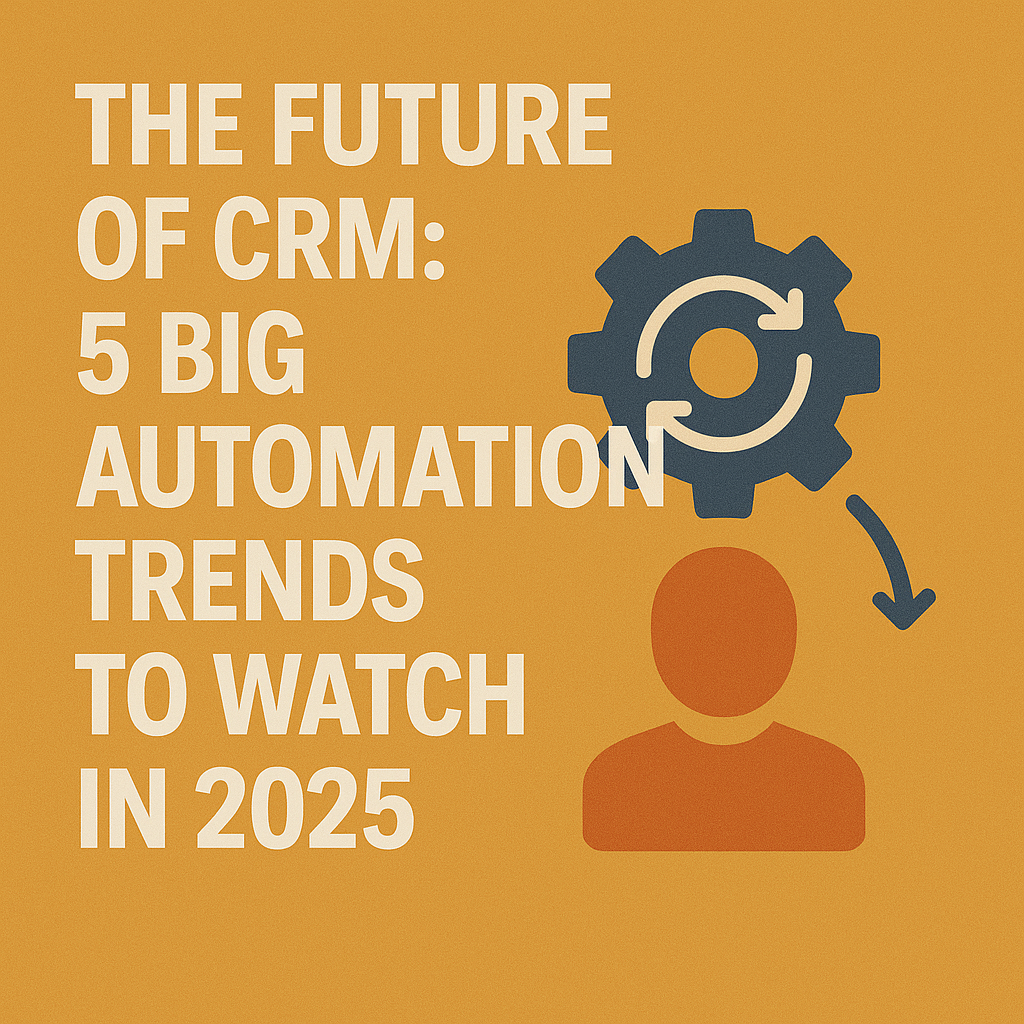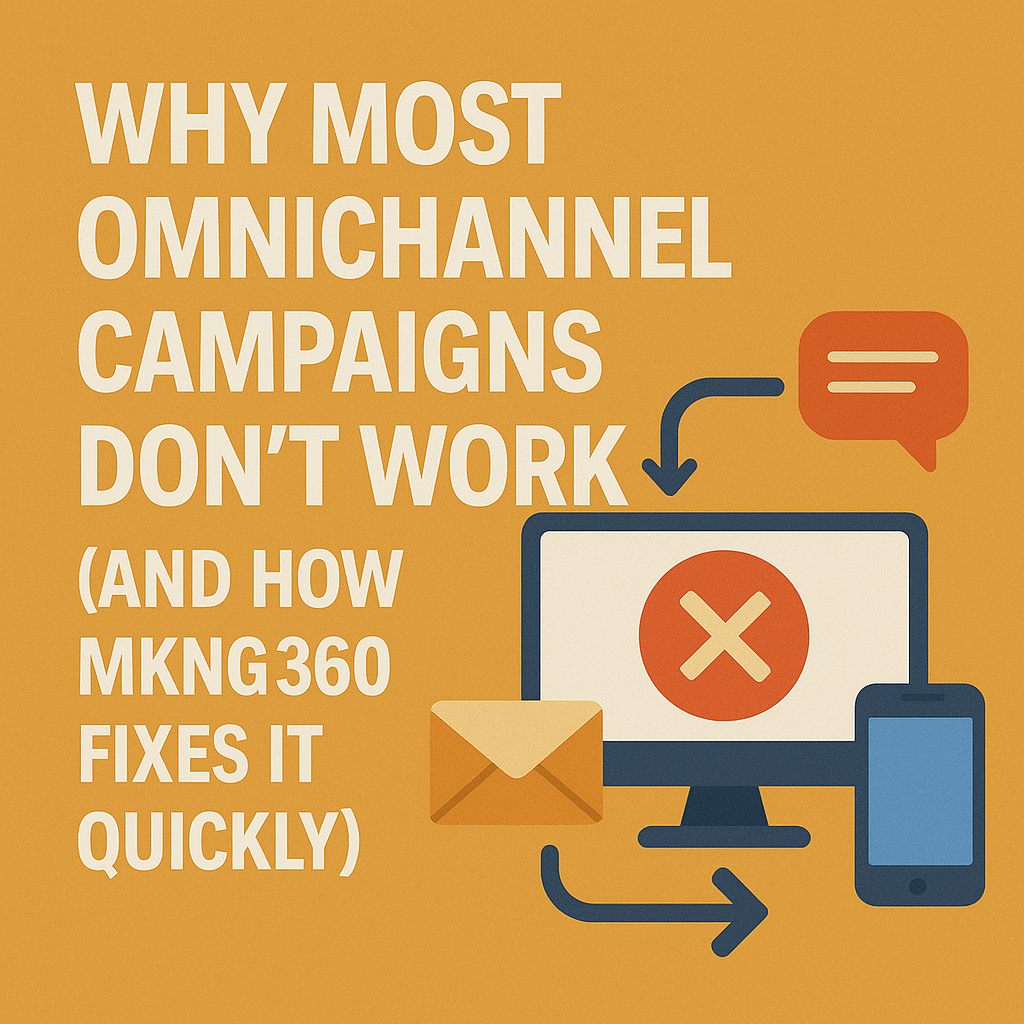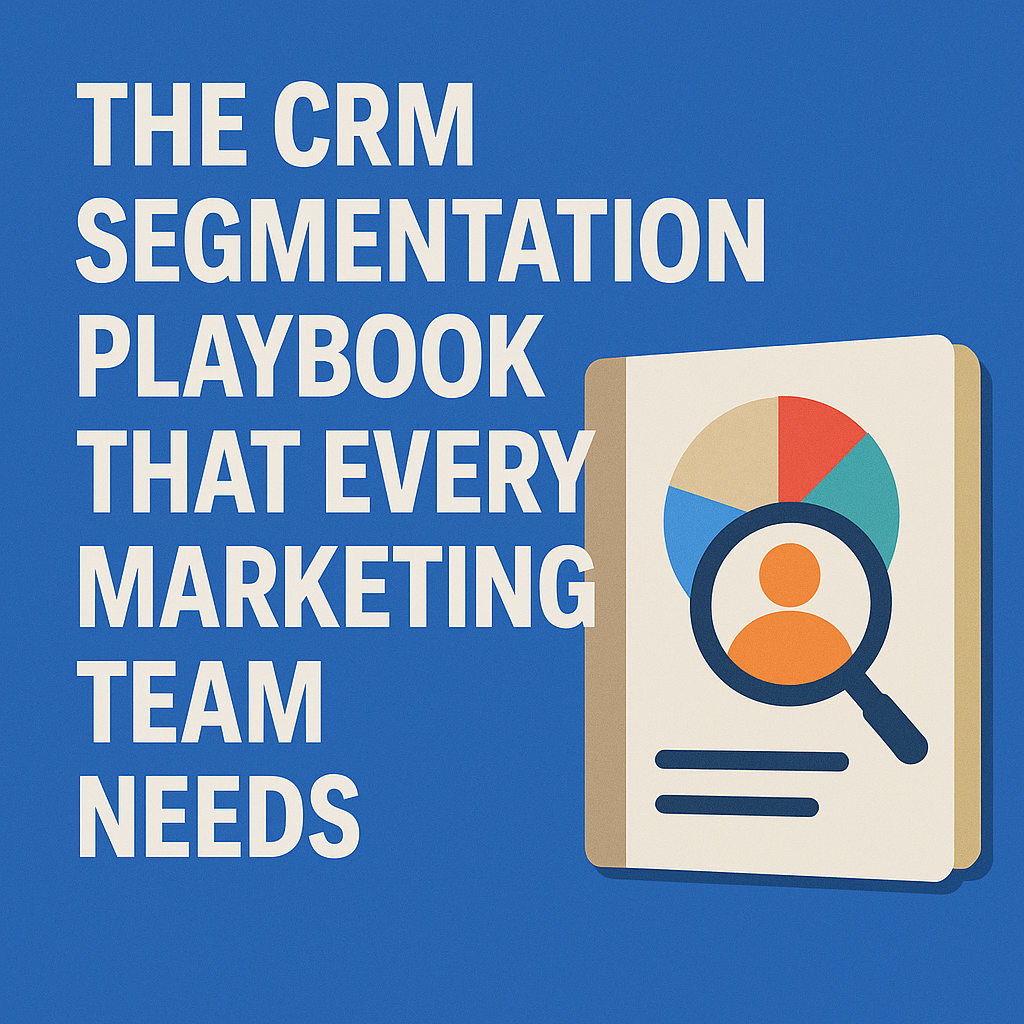Ever Launched Two Campaigns at the Same Time — By Accident?
Picture this…
Your email team sends a promotion the same day your social media team drops a teaser — and no one told each other. Content gets doubled, teams scramble, and your manager’s inbox blows up with “What’s going on?”
This is campaign chaos. And it’s more common than you think.
But here’s the good news: one shared marketing calendar can fix all of that.
Let’s talk about how a centralized marketing calendar helps your team stay organized, work faster, and stop the chaos before it starts — with the help of tools like MKNG360 CRM.
❌ Why Campaign Chaos Happens
When teams don’t have a single place to plan and track campaigns, things fall apart. Here’s what usually goes wrong:
- Campaigns clash and confuse your audience
- Messages are different across platforms
- Work gets repeated — wasting time and effort
- Deadlines are missed and stress levels rise
📊 According to Smartsheet, 55% of marketers say coordination is their biggest problem when handling multiple campaigns. Poor planning doesn’t just slow things down — it hurts performance and trust too.
✅ How a Shared Marketing Calendar Fixes Campaign Chaos
A shared calendar becomes your “single source of truth” for everything going out — and it changes everything.
🔍 See the Big Picture
Know what’s coming — from product launches to newsletters. Spot overlaps and gaps before they become problems.
🧭 Stay On Message
When everyone sees the full plan, brand messaging stays consistent. Email, social, blogs, and ads all support the same goals.
👥 Know Who’s Doing What
Assign tasks clearly. Everyone knows their role and deadline — no more guessing or asking, “Who’s handling this?”
🤝 Work Better, Together
No more Slack messages like, “Is this live yet?” Real-time updates keep everyone in sync without the back-and-forth.
⚙️ Move Fast When Plans Change
Need to shift a launch date? Just update the calendar — everyone sees it instantly. Stay flexible without losing control.
🛠️ How to Build a Shared Marketing Calendar (Step-by-Step)
- List Your Big Campaign Dates – Start with major events: product launches, holidays, email blasts, webinars, and social media pushes.
- Add the Right Info – Each calendar item should include:
- Campaign name
- Channels involved (email, social, etc.)
- Owner (who’s responsible)
- Deadlines and go-live dates
- Status (planned, in progress, live)
- Links to key docs or assets
- Pick a Marketing Calendar Tool That Works for Everyone – Use something your team already knows or can learn quickly — like Google Calendar, Asana, ClickUp, or MKNG360 CRM.
- Make It Accessible – Let every team see what they need. For example, social teams may just want their part, while ops may need the whole view.
- Review Regularly – Do weekly check-ins to update the calendar and monthly or quarterly meetings to plan ahead.
💡 Tools That Make Marketing Calendars Easy
- MKNG360 CRM – Combines calendar views with full CRM workflows
- ClickUp – Great for teams that need visual layouts
- Asana – Perfect for task-based campaign tracking
- CoSchedule or Buffer – Awesome for content and social media planning
Look for features like drag-and-drop updates, status tags, and calendar syncing to keep everything in one place.
🧩 Real Example: MKNG360 Ends the Campaign Chaos
A growing SaaS company had webinars, product launches, and email campaigns running at the same time — but no shared calendar.
They used Slack and spreadsheets… and accidentally sent three emails in one week to the same list. Ouch.
Once they started using MKNG360’s shared calendar, they:
- Cut email overlaps to zero
- Improved campaign delivery speed by 27%
- Gave every team full visibility into what’s coming
Now, their calendar doesn’t just show dates — it drives strategy.
🤖 The Future: Smart Marketing Calendar Tools That Think for You
What if your calendar didn’t just track deadlines — but helped you pick them?
That’s the future with AI-powered marketing calendar tools like MKNG360.
Here’s what’s coming:
- Suggest best send times using past results
- Balance team workloads automatically
- Trigger CRM journeys right from calendar entries
MKNG360 is already building these features — combining planning with performance.
🧘♀️ Final Thoughts: From Chaos to Clarity
A shared marketing calendar is more than just a tool — it’s your marketing team’s command center.
By syncing your people, campaigns, and tools in one spot, you:
- Avoid confusion
- Move faster
- Stay on brand
- Hit your goals
FAQs
What's the difference between a content calendar and a marketing calendar?
A content calendar tracks blogs and videos. A marketing calendar includes everything — emails, ads, events — and ties it all to business goals.
How often should the team update the shared calendar?
Weekly for short-term changes, monthly for alignment, and quarterly for big-picture planning.
Can the calendar connect to CRM tools?
Yes! Tools like MKNG360 connect calendars with CRM workflows to automate journeys, update segments, and track performance.





